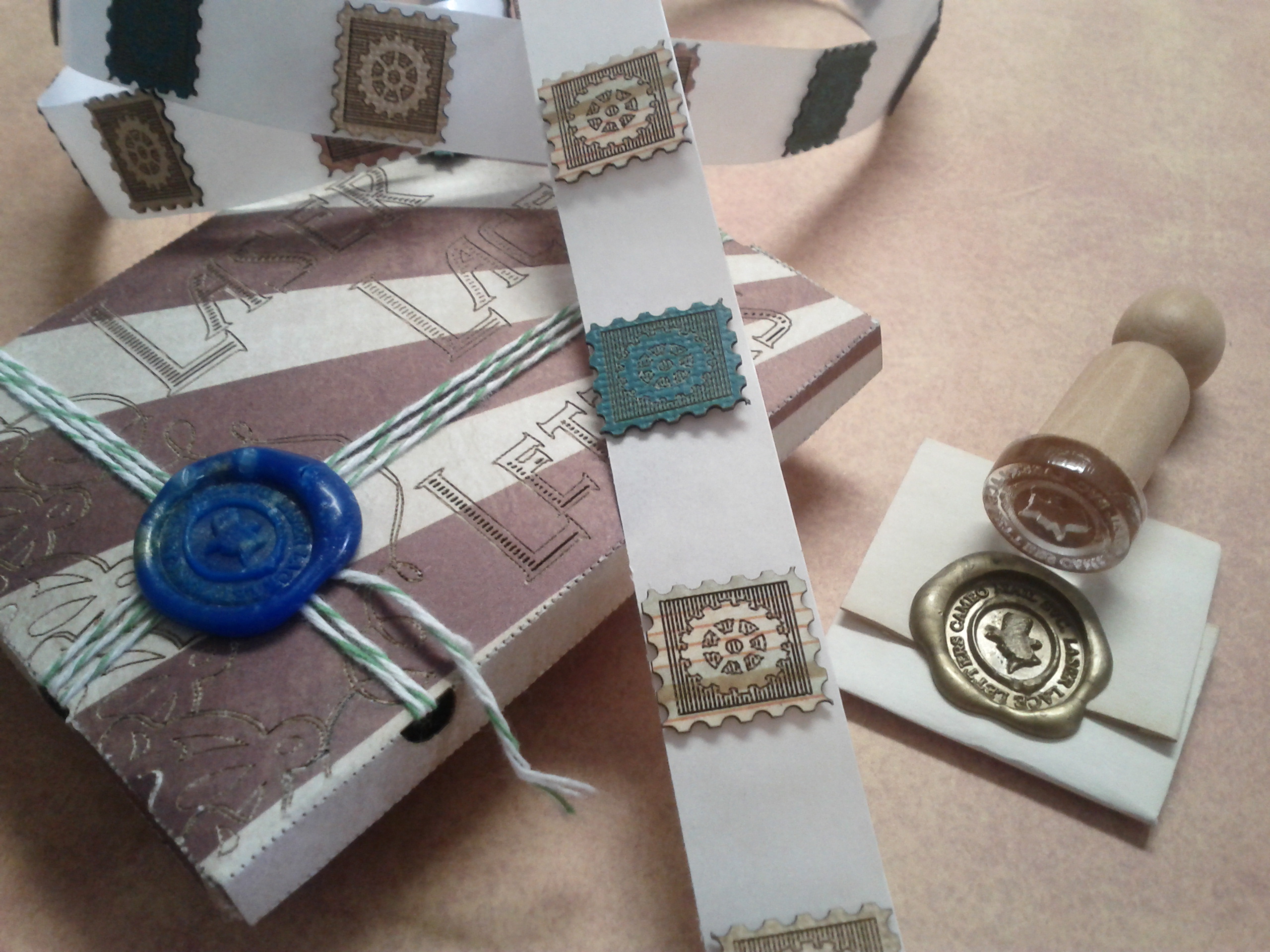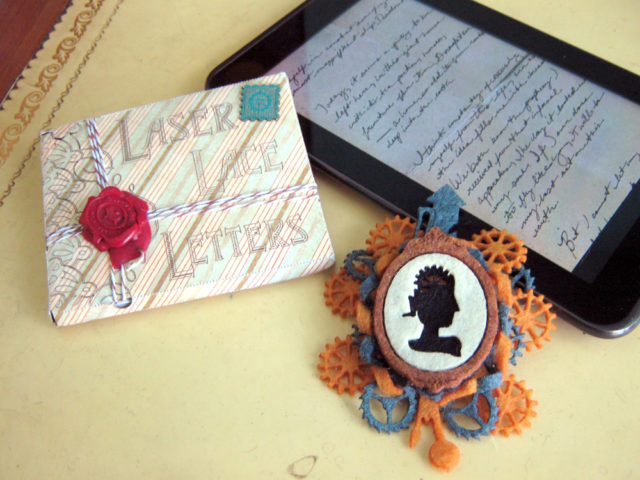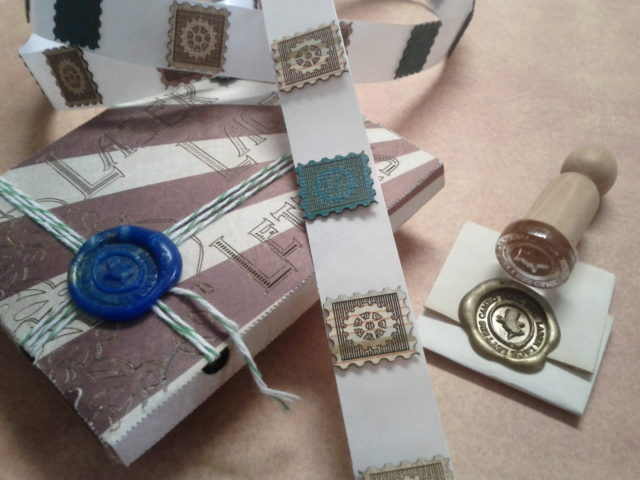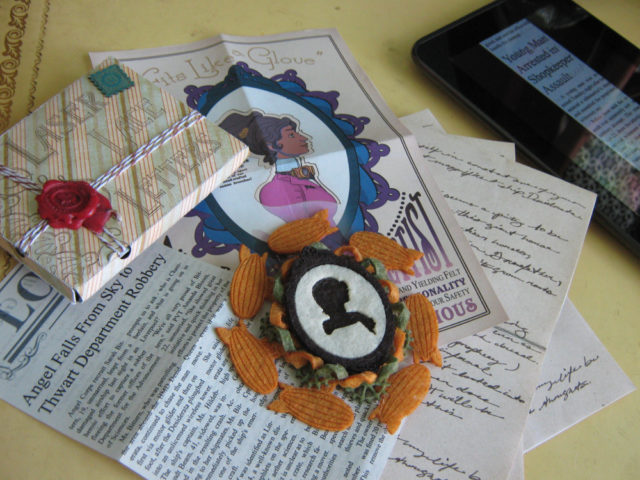[intro]Haley Moore is an artist and designer who specializes in using technology to tell stories with objects. She is also the cohost of the Transmedia Talk podcast, and has covered the ARG and transmedia scenes for the Workbook Project, among other outlets. Haley’s wealth of experience in conceiving and fabricating story artifacts (including the flags, medals, and other swag we commissioned for Reality Ends Here) has established her as an expert in what she calls “evidentiary fiction” or “tangible storytelling.” Her most recent project, The Laser Lace Letters, exemplifies the kind of care, detail, and depth present in Haley’s object-driven storyworlds.[/intro]
Hi Haley! Thanks for doing this interview. I thought we would start with the big picture first. Could you tell us a bit about “tangible storytelling,” and how you ended up working in this space?
Tangible storytelling – that’s easy, it’s telling stories through physical objects. It can be a supportive art that sets the mood for a story, like dressing a set, costuming a character, or choosing just the right presentation for your mailers. Often it’s the first thing people experience in a transmedia campaign, through an object they get in the mail or something set up in a public place. Some projects rely more on tangible, some less.
At its deepest, tangible storytelling ties in closely with the idea of story archaeology. When we’re asking the reader to dig up some fossils, I’m the person who designs the bones.
I started doing tangible work on my very first Alternate Reality Game, which was a fan ARG for the TV show Alias. Shortly after, I was recruited to build some key artifacts for Dave Szulborski’s second Chasing the Wish ARG, Catching the Wish. By then, my reputation for being a jack-of-all-trades craftsperson was settled, and my artistic development became hopelessly entangled with ARGs.
Describe the Laser Lace Letters. How do people experience the story world you have created? How does it differ from other kinds of fiction?
Every few days, I’m coming up with a new way to describe Laser Lace, and at the moment it’s this: Laser Lace Letters are short stories that you explore by pawing through other people’s stuff.
In Laser Lace Letters, you’re tasked with piecing together the evidence related to a disappearance – and by evidence, I actually mean physical artifacts. Diary pages, sketches from the journals of inventors, pages torn out of childrens books, deeds, manifestoes, photographs, love notes, suicide letters.
The cool thing is, all this evidence comes from an alternate steampunk Victorian era, so you aren’t just looking at beautiful handwritten letters, but ones that talk about clockwork powered tiny robots and how you can use them to assassinate people, or what it’s like to be an airship captain, or the challenges of being a stage magician in a world where technology is already a bit magical. It’s like this fell out of time and into your mailbox.
At the center of each story, we have a unique central artifact. I’ve been working on these for about a year now – felt laser cut cameos that represent the central character in each of our seven stories. When you’re done with Laser Lace Letters, you come away with a wearable momento.
These things are made on a hobby laser cutter that I’ll be buying with the money raised in the Kickstarter. They’re amazingly detailed – for example, one of them features an airship fleet, complete with little windows on the sides of the cabin. We have one cameo that’s surrounded by crimson gears, daggers, and a bloody red heart.
Obviously, there are a lot of things in this approach that are different from film or a novel. There’s no third person omniscient and no proscenium. Each story has at least one character who’s a bit of a narrator, but it’s very much about reading between the lines and putting the pieces together. Voice and intertextuality are extremely important, and because we can’t see our characters, context and style become part of the narrative language. Even the color of paper each character writes on becomes significant.
What were your inspirations for the project?
Ah, Jordan Weisman, how do I love thee? I was utterly enchanted with Cathy’s Book, and I dug on Personal Effects: Dark Art. Like most people, I was also in love with the Jejune Institute, even though I never got a chance to play it in person. Those are tangible, tech-light experiences that present really deep rabbit holes to fall into.
I’ve been tossing the idea of a steampunk project around ever since I met Yomi Ayeni at Storyworld last year and found out he was interested in partnering with some other artists for Clockwork Watch. That’s exactly what ended up happening with Laser Lace, it’s the first big Clockwork Watch spinoff.
A couple of other things spurred it on. Girl Genius is a fantastic comic that influenced the way I think about steampunk. David Malki does a series called True Stuff From Old Books, which is full of very real weirdness from the same era that steampunk stories exist in. I’m a huge fan of the Phoenix Wright games, which often involve closely examining evidence. I’ve been knee deep in the Library of Congress’s Prints and Photographs Online Catalog, and also following the work of Lea Redmond, a killer tangible artist who runs World’s Smallest Postal Service and was involved with Jejune.
The cameos came directly out of some experiments that I did at the Dallas Makerspace last December. I’d finished my annual donation to the Desert Bus for Hope Craftalong. Last year was a giant soft mosaic made from laser cut felt, and afterward I started experimenting with self-forming woven shapes using the leftover felt. The story grew out of the design process, and has a lot of close ties to the real origins of the cameos.
This kind of work seems to have so much potential, especially in the age of the ebook. It’s almost like this is where physical book publishing in general needs to head — that is, toward providing readers with more than just pages of text, but with real artifacts that can’t be duplicated digitally. In that sense, do you consider this a kind of publishing project?
It’s an ironic question, because Laser Lace straddles the border between digital and physical. Everything has a digital origin – even the cameos, which are made from parts cut out by a computer-controlled robot. And yet, so far on Kickstarter, people have shown that they want the physical version of the stories rather than the digital version. Designers have to set out to create a specific physical experience, in order to get audiences to not take the “shortcut” to digital.
Yep, it’s a publishing project. It’s most similar to a comic book series, except we have a digital book instead of a trade paperback.
I think we’re in a transitional era right now, where the safest thing is for publishers to stick with a straightforward content design that they know how to push to both print and digital efficiently. I can’t wait to see what happens once we get a good standard for introducing interactivity in a traditional reading flow on a tablet. Then, I have a feeling digital artifacts are going to become extremely common, just as they are in video games.
There’s no doubt that publishers can profit from integrating tangible in the right way – but I’ve imagined what this project would look like in the hands of a big publisher, and it involves manufacturing everything in China and leaning on economies of scale; it’s a big investment for a publisher to make.The flipside of the internet age is that, even though it’s pulling the traditional reading experience to digital, it’s also connecting suppliers and creators. Today, a small outfit can do a project like this, which would have been impossible without a publisher ten years ago. It’s the same reason we don’t necessarily need big apparel companies, toy makers, or technology companies to bring great stuff to market today – although it certainly helps. Small creators can bring an artisanal dimension to the art – everything in Laser Lace Letters has been put together from start to finish by an artist, whether its weaving the lace or putting the wax seal on the package.
I’d love to see a publishing partnership with a group like a hackerspace. Some very interesting and innovative stuff would come out of that.
This question has two parts. First, who is the intended audience for Laser Lace Letters? And second, how broad is the audience you imagine for tangible story projects in general?
If you like steampunk, ARGs, or mystery stories, you’re going to love Laser Lace. Though we’re doing some online teasers/expansions, the core experience is no-tech, so anyone who can pick up a book can enjoy one of these stories.
That said, while Laser Lace is a reading experience for adults, I think the audience skews a bit younger, with people who are more familiar with things like the Harry Potter franchise that has all sorts of artifacture surrounding it. The steampunk audience is in about that age range as well, so I’m reaching out to an audience that has a sweet tooth for this kind of thing.
I’m really trying to introduce some diversity to steampunk and break gender norms. Too often, the genre seems like an endless parade of white men. So, when we went to create an in-game advert to appear in the new Clockwork Watch comic, the art we created was of an Indian woman. She’s wearing period costume and some stylish goggles, and she’s utterly gorgeous. Again, we can’t see the characters in the main story, so most of them we have no idea what their race is. I want to open it up a bit, so everyone can come and play in our world.
The breadth of audience for tangible stories depends a lot on the type of story. You have the best shot by working in a genre that has a popular appeal, just because so much of the story is tied up in stye. I’m inclined to think that kids who grew up on things like Harry Potter and the Ologies books are going to be more disposed than the current average to start reading things like Laser Lace, as they move out of their teens and into their twenties over the next five years.
Of course, as extensions of a bigger story world, tangible stories are a pretty easy sell to fans of the larger project. They’re like merchandising and spinoff fiction rolled in one.
What can readers do to support this project?
If you like the idea, you can check out all the stories and pledge on our Kickstarter page, or if you’re broke, you can spread the word on your various Twitters, Facespaces, and Mumblers.
Any surprises you can tease us with?
We’re slowly rolling out teasers for each of the stories at LaserLaceLetters.com, but we haven’t even begun to scratch the surface of four of those stories. Pretty soon you’re going to meet our mad science character and get a load of his special brand of quackery.
Also I highly advise you watch the stream for Desert Bus for Hope. A bunch of comedians play the worst video game ever made until you stop giving them money for charity. It’s a blast and well…you’ll just have to see.
Finally, what’s next for you?
If all goes well, I’ll be lasering and writing for several months. I hope to take Laser Lace to trade shows and conventions in the Spring and Summer of 2013, including at least one event with the Clockwork Watch crew. After that, so very many projects. I’m still working on an object-augmented book called Research and Developments, as well as a tangible city exploration project.




Haley Moore: Tangible Storytelling and the Laser Lace Letters http://t.co/oZGT9yae #interview cc @toenolla
ICYMI, @remotedevice and I talk about where handcrafting and publishing meet, and create something extraordinary. http://t.co/P60kjHRP
@sstewartwriter I want you to know that Cathy’s Book inspired me to do a tangible short story series. You rock. http://t.co/HsK552Am